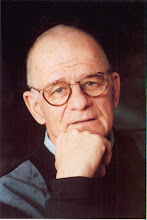What's Wrong with Bob Lutz Taking a Vacation Before He Wields the Axe?
Everyone in the ad world is atwitter about Bob Lutz being given the reins of General Motors marketing and advertising. And that certainly will be the main event for a couple of years to come. Being responsible for the $600 million that Chevrolet spends on advertising every year; Buick’s $100 million; Cadillac’s $200 million; GMC Trucks’ $200 million; and GM corporate other $100 million – for a grand total of $1.2 billion—is nothing to sneeze at.
But the bigger problem revolves around what Lutz and his boss, GM CEO Fritz Henderson, are going to do to make these marques best sellers. And already a drumbeat has started in the industry saying Lutz isn’t up to the task, either because he doesn’t have the training, or, at 77 is too old to understand how to spin a good idea through the new media matrix. As marketing strategist Al Ries wrote in AdAge this week, “Bob Lutz seems to be on the wrong track when he immediately focuses on fixing the advertising….Advertising at GM is not broken. Marketing is.”
What set everyone off was Lutz’s first move, which was to call in each of GM’s half dozen agencies for a 20-minute review of their work. Apparently he didn’t find any of it very inspiring. And then he decamped for a long-planned holiday on the Caribbean island of Montserrat.
Well first of all, I think the guy deserved a rest. He’s just survived seven grueling years trying to retool GM’s product line, six months of Obama administration-ordered, GM downsizing and a 60-day journey through bankruptcy.
But Ries and others, I believe, are selling him short if they don’t think he’s enough of a marketer to get things moving. As he told veteran car writer David Kiley in Business Week, “Most people assume I’m an engineer. Actually my MBA is in marketing from the University of California….[and] I was head of marketing and sales at BMW in Munich when ‘The Ultimate Driving Machine’ tagline was born.”
Can Lutz and his colleagues unlock the power of these venerable old car brands? I don’t think anyone can say. What we know is that the new team at GM has only three or four years to get this right—and they have just about every force imaginable working against them.
Besides the clock, they have to keep an eye out for government [U.S. and Canadian] which now owns a majority of their stock—but really doesn’t know anything about making and marketing automobiles. Second, for every brand in almost every category they’re losing market share. Never mind that this has been a terrible time for cars and trucks in general and that money is tight, making consumers windy of making big purchases and GM’s board and banks less than ready to fund any new products. And even if they had some good cars in the pipeline, it’s still not known how important fuel efficiency will be or where they’re going to find affordable new battery designs to help them catch up with the Japanese in hybrid manufacturing.
Al Ries is right about one thing: the biggest challenge facing the Lutz team is how to position Chevrolet, Cadillac and Buick-- and how to make each of them “best of class” in their individual market segments.
Cadillac can’t just occasionally have a good model. People have to start perceiving it as the equal of Mercedes, BMW and Lexus. And then Buick has to be up there fighting BMW, Audi, Acura, Infiniti, Hyundai and Ford and Chrysler in the “just under premier” class of mid-priced luxury cars.
Then Chevrolet has to go up against Ford, Chrysler, Jeep and the giant imports, Toyota, Honda, Volkswagen, Hyundai and Nissan. [And, of course, many of these “imports” are manufactured in the U.S. so “made in the U.S.A’ doesn’t necessarily point consumers at a GM car.]
So let’s give Lutz his couple of weeks off the radar in Montserrat. Then he has to come back and make some decisions, fast. Either stay with the current agency line-up or bring in fresh blood. Either keep the CMOs he inherited or retool his own internal team. Either leave the muddy positioning of his three main car brands where they are or sharpen their positioning overnight. Lutz told Ries: “I think you will very quickly see a drastic change in the tone and content of our advertising. And if you don’t, it will mean I have failed.”
This is not a game for the feint of heart. Let’s hope Lutz is as feisty and sure-footed as he sounds. He needs a vision, a plan and then near perfect execution.

